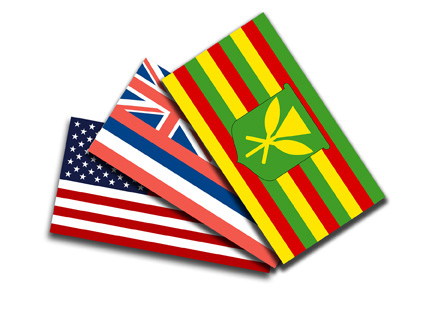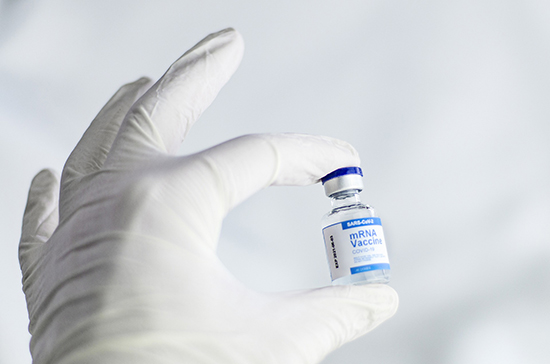
Aikue Napoleon can often be found sitting at his usual table at the Kailua Starbucks–laptop and textbook open, earbuds in, hard at work.
The 20-year-old Kapi‘olani Community College student is a regular at the coffee shop, where he spends a few hours most weekday afternoons studying. He said it takes him a little longer than his friends to do schoolwork as he has to reread things until they make sense. He is working toward his associate’s degree–an accomplishment that he and his family are eager to achieve.
After attending Ke Kula O Samuel M. Kamakau, a Hawaiian language immersion school in Kāneʻohe where he spoke strictly ʻōlelo Hawaiʻi (Hawaiian language) from first through fifth grade, Napoleon struggled when he transferred to Maunawili Elementary, an English speaking, western-style school in Kailua. He described the experience as “culture shocked.”
While Hawaiian immersion schools may link students closer to their culture, many struggle with academics after transferring to English medium schools.
“It’s so hard. You grow up doing it one way (speaking and writing in ʻōlelo Hawaiʻi) and then you’re told that’s wrong, do it this way,” said Kauʻi Goodhue, a WCC student who attended Kamakau for 12 years.
In 1896, three years after the illegal overthrow of the Hawaiian Kingdom, Hawaiian language was banned from all public and private education in Hawai‘i following the model of U.S. policy towards the use of American Indian languages in education, according to a timeline from ʻAha Pūnana Leo, a family-based educational organization dedicated to the revitalization of the Hawaiian language.
The Hawaiian renaissance of the late 1960s and early 1970s led to an increase in interest and practice of the culture. The fear of losing the Hawaiian language became a major focus of the movement. After four generations of Hawaiian language being banned in schools, Hawaiian language scholars and community leaders lobbied for the removal of the near century-long ban.
In 1987, the state Departmet of Education (DOE) established a pilot Hawaiian language immersion program, Ka Papahana Kaiapuni, in two public schools where students were taught exclusively in Hawaiian until English was formally introduced for one hour a day in grade 5.
The program has grown to 21 schools across five islands and services more than 2,000 students annually.
Charnay Kalama-Macomber describes Ke Kula O Kaiapuni as a Hawaiian dwelling where students learn more than the language but the culture too.
“You need to be willing to immerse yourself in the customs and in the practices, in the values that come with ʻōlelo Hawaiʻi,” she said.
Kalama-Macomber and her mother were at the forefront of this movement. She was a student of the first Hawaiian immersion class of Ke Kula Kaiapuni O Pūʻohala, a Hawaiian language immersion program at Pūʻohala Elementary School in Kāneʻohe.
When the DOE required English to be formally introduced to students in Kaiapuni schools, Kalama-Macomber received help at home. She grew up with a mother who she said supported her education and the importance of being able to understand both worlds, Hawaiian and English.
After school she would go home and do her schoolwork then study in English with her mom, who would coach her along.
Kalama-Macomber said the Hawaiian mindset is very different from an English mindset in the way that it’s not literal. The way you speak and the words and concepts you use are metaphorical. After transferring to Kamehameha Schools, reading something at face value was difficult for her.
“It was a struggle for me to really excel in reading comprehension, and to this day that’s still my lowest thing that I try to work on,” she said.
Napoleon believes Hawaiian immersion “prepares you culturally and broadens your perspective on things, but academically it’s not up to par.”
Students introduced to English in grades 2-5 show evidence of a “lag” in specific English language skills–spelling, capitalization, punctuation and word knowledge and discrimination, according to researchers from the Center for Advanced Research on Language Acquisition. But researchers also stated that the lag should be temporary, usually lasting one to two years.
Austin Ewaliko, 17, is a senior at Damien Memorial School, which he’s attended since ninth grade. After being accepted into the private Catholic school, he had to relearn the grammar and mechanics of English. He spent after school tutor sessions relearning his first language.
“It just felt harder, putting everything together,” he said. “It was real different than Hawaiian.”
Ewaliko previously attended Ke Kula O Samuel M. Kamakau for four years. He said while in the seventh grade, he was surprised to see most of his peers reading third grade level books.
“They weren’t reading the level they were supposed to be,” he said. “I knew it (the school’s academics) wasn’t going to be enough to make it to college.”
Makanani Salā, a Hawaiian studies professor at WCC, has seen Hawaiian immersion students struggle in her classes.
“I don’t know if we want them to transition to us, or we want to be able to transition and offer them what is good for them,” she said. “Which is an education in their own language.”
“That’s really trying to push the academy to think of our populations differently, as assets rather than this deficit model that we get stuck into,” said Kaiwipunikauikawēkiu Lipe, who works as a Native Hawaiian affairs specialist at the UH Mānoa.
Lipe said studies about Hawaiian immersion students and their transition to English, western-style schools are little to none.
“The university is growing to think of Hawaiian things differently,” she said.
She sits on multiple boards and committees, including KSUH–a partnership between Kamehameha Schools and the University of Hawai‘i–which she said is gathering in June with teachers and practitioners to talk about how the two institutions can help renormalize the Hawaiian language and possibly create a liberal arts degree students can pursue speaking only in ʻōlelo Hawaiʻi.
Currently, students at UH have access to various campus resources including Hawaiian language courses, access to mana leo (native speakers), Ka Leo Hawaiʻi recordings and the Hawaiian newspaper.
“I’m hoping that one day, we have an educational system in immersion, in English, in Hawai‘i that we’re preparing them (students) for whatever they want to do,” Lipe said. “Weʻre preparing them to be farmers again and fishermen and kapa makers and kumu hula. And that we’re creating a world that if they wanna be just Hawaiian, then they can.”
Kalama-Macomber urges Hawaiian immersion students to use the resources they have access to.
“Use whatever, put yourself out there. Let people know this is what I wanna do and this what I need from you … and take it,” she said. “Be ha’aha’a, humble yourself and take whatever help is going to come your way because it’s only going to be better in the end.”
By Ka‘ainoa Fernandez, Ka ‘Ohana Staff Reporter





